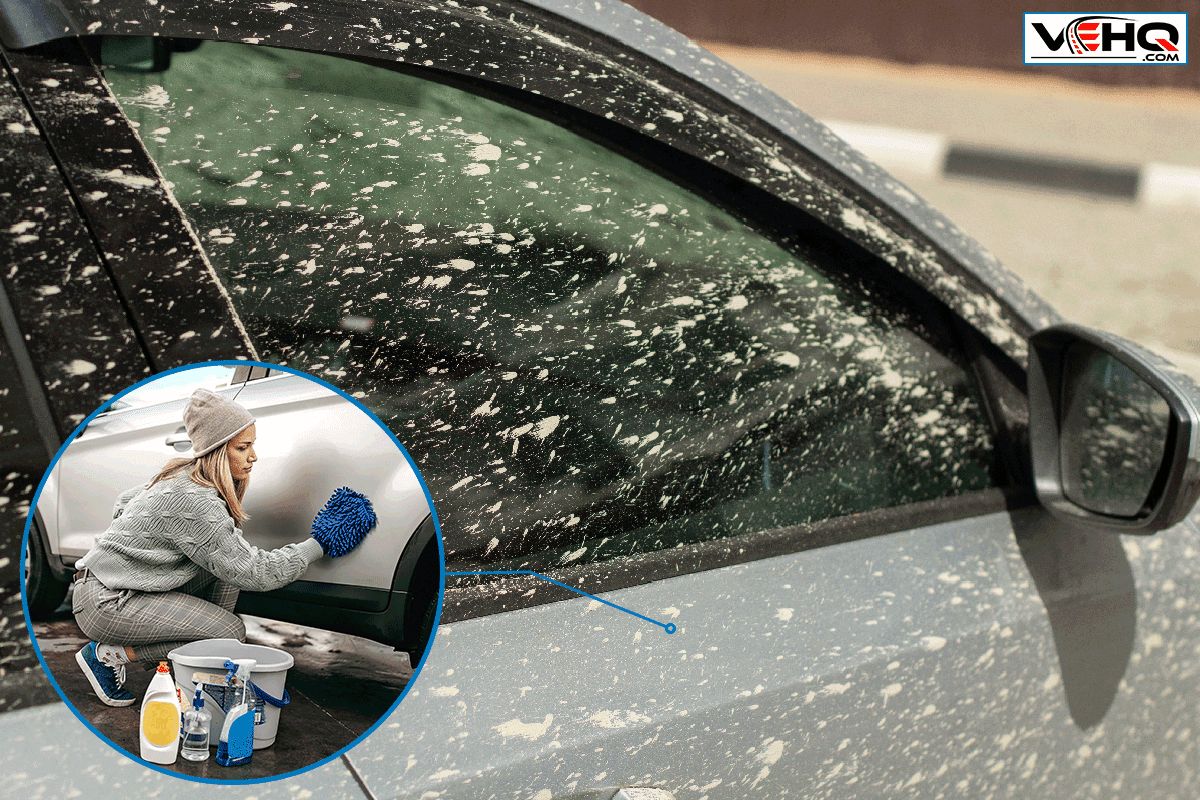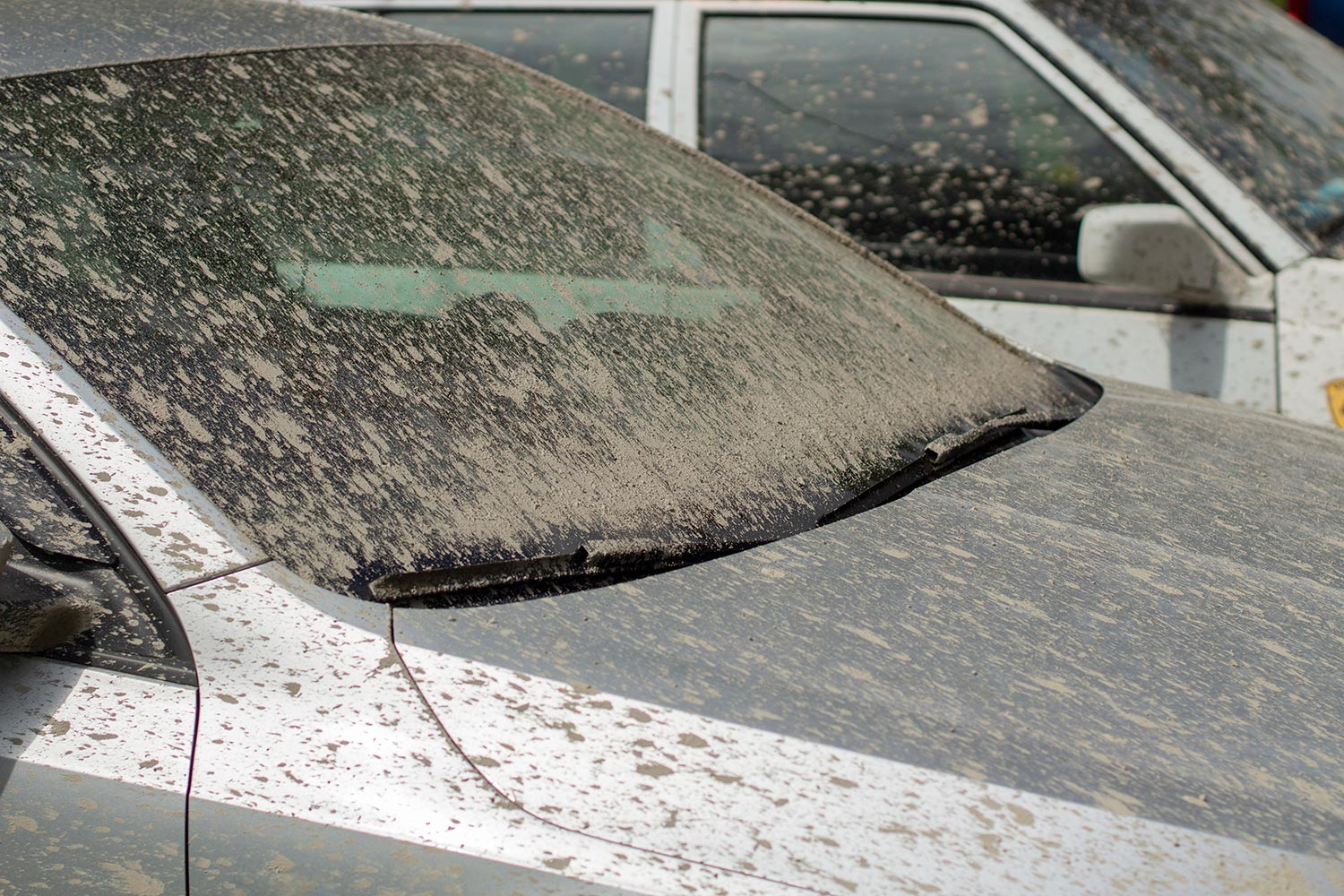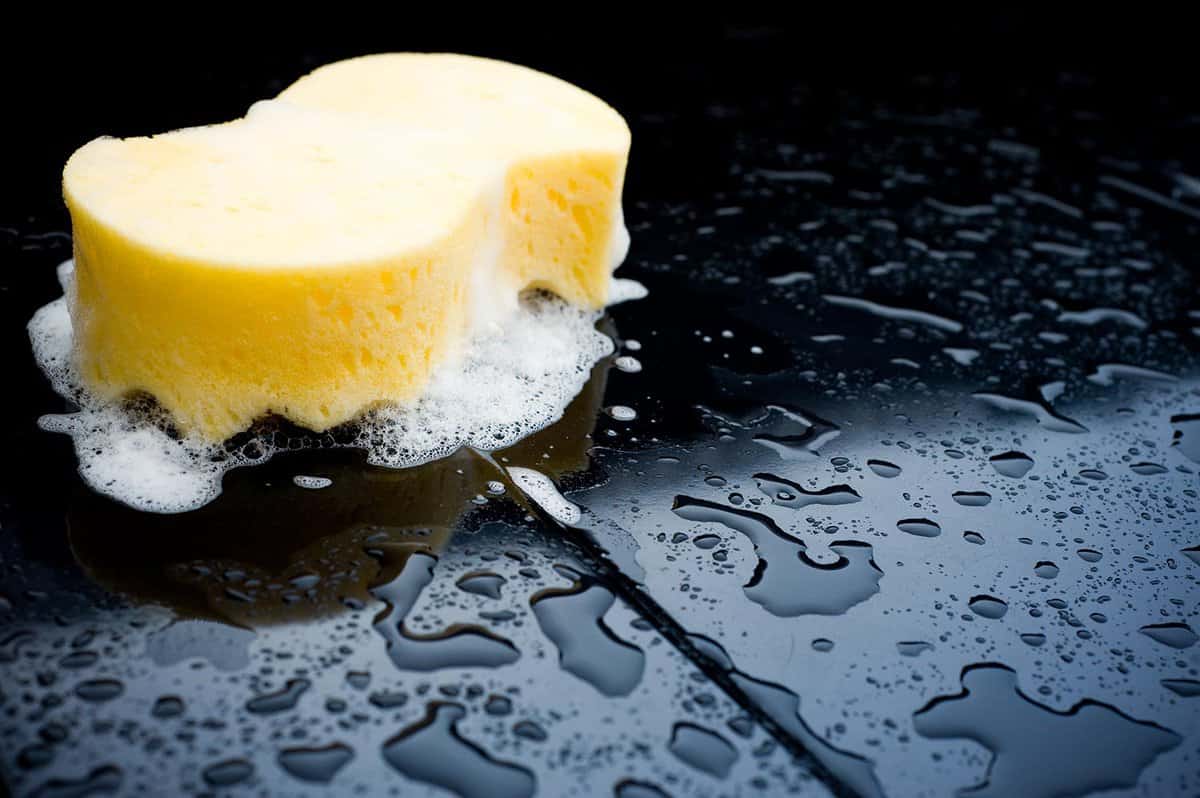Have you ever experienced that your car has specks of cement scattered on its exterior? Then, you keep on wondering if you can remove it with regular car washing. Worry no more! We have asked the experts for helpful guides on how to remove the cement dust in your car.
You can remove cement dust from your car’s exterior by using vinegar or acetic acid. Another good alternative is to use commercial concrete dissolving agents.
Cement dust covering your car is a cause for concern. Don't let it settle on your car's body for long. Keep reading as we discuss in detail some tips and guides to clean your car and get rid of cement dust.

What Does Cement Do to a Car?
Cement dust and splatter on your car’s body is an eye sore that causes unsightly marks. Not only does it smear the surface, but it can also damage the car’s paint. You would see an uneven surface with bumps than you would otherwise have a smooth and polished car paint.

The hardened concrete that causes bumps on the surface underwent a chemical process called hydration. This means that liquid cement had solidified due to its exposure to water and air. From this perspective, it clearly explains that the process of removing the cement particles must be a chemical, and not a mechanical, procedure.
And one chemical process in removing cement dust is through applying acetic acid or vinegar. We will further explain the working mechanism of vinegar in the succeeding section.
If you wish to learn about other environmental contaminants, we have this post for you: "Why Does My Car Get So Dusty? [Inside And Out]."
How to Remove Cement Dust with Vinegar
At first thought, you might think that vinegar and cement dust are so radically different. Vinegar belongs in your pantry, while cement dust is outside. But here it is, vinegar works wonders to get rid of cement dust.
Materials Needed

Vinegar: There is no hard rule on what type of vinegar to be used. It could be the edible vinegar you use in your cooking or the industrial-grade which is concentrated acetic acid. The latter is stronger and more powerful that requires dilution prior to use.
Check out this industrial-grade vinegar on Amazon.
Sponge: This is ideal for car cleaning since it is soft and smooth and does not leave marks and scratches on the car's paint. It is made of high-density material, highly absorbent, and has a high holding capacity. It should be big enough to cover a bigger area to clean while handy so that you can easily manipulate it.

Check out these sponges on Amazon.
The other materials are:
- Bucket or pressure washer
- Work gloves
- Microfiber cloth
You might wonder if microfiber is indeed best for car cleaning, we have this post for you: "Microfiber Vs. Terry Cloth: Which is Better For Your Car?"
Steps and Procedure
A preparation procedure is needed if you use concentrated acetic acid. Mix a solution with one part water to one part acid. After which, you can proceed with the steps below.
If you will be using ordinary vinegar, no prior mixing is necessary. Don't mix it with water, else, it will lose its acid strength. You can directly use it then.
- Wear protective gloves to lessen skin contact with acid as you work.
- Clean the car's body with water to get rid of loose dirt and grime. You will notice that cement particles remain on the surface even if you hose it with water.
- Soak the sponge with vinegar.
- Dab the sponge directly over the spots with cement specks and splatters.
- With just minimal pressure, let the wet sponge stay over the surface for a few seconds.
- The cement would slowly disappear or gradually melt.
- Continue to dab the surface with the sponge until there are no evident traces of cement.
- When the sponge is getting dry, you can pour vinegar again and repeat dabbing until you have completely covered and removed all the cement particles.
- Rinse off all the dabbed areas with water to make sure that vinegar is washed out from the surface. A bucket of water or pressure washer should come in handy.
- Rinse off the sponge with running water. Let it dry to be ready for its next use.
- Wipe dry all areas with a microfiber cloth and polish your car.
Know more about polishing your car's exterior on this post: "Cleaner Wax Vs. Polish Vs. Clay Bar: Which is Best for your Car?"
How to Remove Cement Dust with Commercial Cleaner
As a safe alternative to the aggressive acetic acid, use commercial cleaning agents such as a concrete dissolver. Aside from Amazon, it is readily available in supermarkets, hardware, and automotive shops.
This concrete dissolver is an environment-friendly liquid to dissolve hardened cement dust on your car's body. It is non-hazardous and non-corrosive that won't damage your car's paint. It comes in various packaging: the 22- or 28-ounce spray container and 1- or 5-gallon container. If you have the latter, you need to buy a sprayer as an accessory.
A sprayer is needed for easy application
Check out this concrete dissolver on Amazon.
The other materials are:
- Bucket or pressure washer
- Microfiber cloth
- Work gloves
- Safety goggles
Steps and Procedure

Here are the steps to follow with a concrete dissolver:
- Since you will be working with a chemical liquid, you should wear protective gloves and eye goggles.
- Clean the car's body with water to get rid of loose dirt and grime. You will notice that cement particles remain on the surface even if you hose it with water.
- Spray the concrete dissolver on your car's body. Do not spray sparingly, as it will lose its purpose. Be sure to cover all spots with cement dust and splatter, including the windshield, tires, and tire rims.
- The concrete dissolver works into a foamy solution and doesn't easily run off. Let it stay on the surface for 20-30 minutes. At this time, the chemicals are acting up to melt the cement dust.
- You should be in a shady area or during cloudy weather. Else, the strong heat of the sun or high temperature can melt the foam solution right away.
- While there is still foam solution, you can check your car's surface, if there's still cement dust present. Stubborn dust particles may take even up to an hour to disintegrate with the chemical cleaner.
- Rinse off the cleaner. A bucket with water or a pressure washer should come in handy.
- Wipe dry all areas with a microfiber cloth and polish your car.
Here is a video to reinforce the steps:
Vinegar (Acetic Acid) Vs. Concrete Dissolver: Which to Choose
We have discussed that both acetic acid and concrete dissolver can effectively serve the same purpose. And both have harsh chemical components that, though not significantly, might cause slight staining on the car's paint. It may not be highly visible, but still, it degrades the luster of the car's paint.
If cement dust is scattered sparingly on your car, such that it only appears in a few areas, dabbing a sponge with vinegar would be a good option. For example, the dust could only be on the trims, the windshield, or the bumper.
It takes a lot of patience, and your time, to remove the cement dust with vinegar. Just imagine dabbing each and every affected spot on your car's body. And some are stubborn dust that may take much more time to remove.
If cement dust covers a larger area of your car's body, then the foam solution of the concrete dissolver is a good option. In a single spray, it can cover a relatively larger area. Hence, less time is used up, and your cleaning job gets done quickly.
Therefore, resorting to the concrete dissolver is the better option in terms of convenience and ease of application. And much more, the latter requires no pre-mixing. You can readily spray and apply once you have purchased one.
At the price point, acetic acid is definitely cheaper than commercial agents such as concrete dissolver. Vinegar is budget-friendly, and you can even make use of your stock in the kitchen!
How Does Vinegar Work on Cement

Vinegar, chemically known as acetic acid, has been long known to be a safe and proven cleaning agent. It is biodegradable, non-toxic, and more importantly, it is inexpensive and readily available. Definitely, you would always have a bottle in your pantry since it is a seasoning for your cooking.
Acetic acid is a weak acid, which makes it non-corrosive. While cement is a mixture of calcium and alkaline compounds. With a naked eye, the concrete dust is composed of gravel and sand that are bonded together with a cement paste.
When you apply vinegar over cement, a chemical reaction takes place. There is a blending of acid and alkaline compounds. Upon contact with acid, the bonding of the compounds will gradually degrade or weaken. The cement paste gets loosened. You would then notice that the cement specks disappear and slowly disintegrate with running water.
Final Thoughts
Cement dust should not stay long as it can alter the appearance of your car's paint. Removing cement dust is a simple and straightforward job. And relatively cheap! All you need is vinegar or acetic acid. Using a concrete dissolver is a good alternative, though.
Take your worries away after removing the annoying cement dust on your car. You successfully restore your car's appearance with a new look and luster of your car paint.
Maintaining your car's exterior? These articles would surely interest you:
How to Remove Spray Paint Without Damaging Paint Underneath
Will WD-40 Harm Your Car's Paint? [The Answer You Need to Know!]



